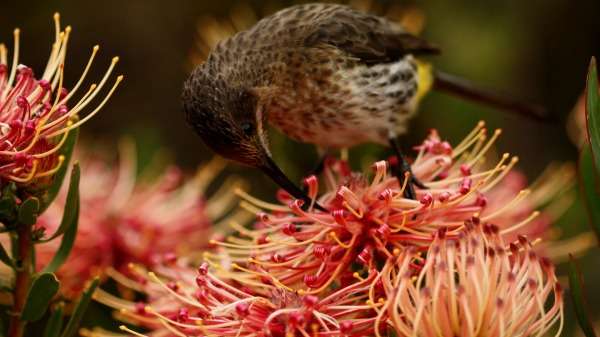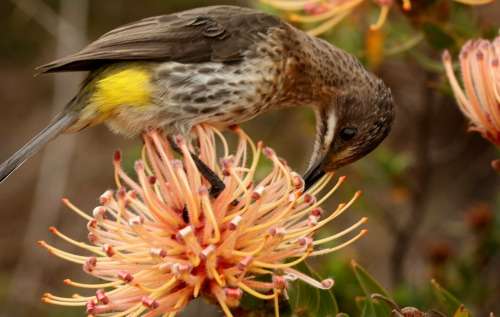Birds dig deep in carving out Proteaceae evolution

Australian and South African scientists have found pollinators are driving evolutionary divergence in members of the Proteaceae family including the Leucospermum tottum.
Researchers from Curtin University's Plant Ecology and Evolution Group and Stellenbosch University in Cape Town examined L. tottum var. glabrum and L. tottum var. tottum to investigate how their different appearances, seed production and nectar volumes related to insect and bird pollinators.
While eight molecular markers showed them to be indistinguishable from one another, their pollinator visitors' physical characteristics helped explain the varieties' divergence.
"Since Charles Darwin, it has been recognised that angiosperms [flowering plants] and their pollinators both possess morphological traits that mechanically fit one another," Curtin's Dr Tianhua He says.
"When pollinator availability is reliable, angiosperms should adapt to the most abundant and efficient pollinator available."
To test this theory, researchers recorded visitor species to L. tottum var. glabrum and L. tottum var. tottum populations for three days at four separate sites near Cape Town.
They found Cape sugarbirds (Promerops cafer) and long-proboscid flies (Prosoeca sp.) pollinated L. tottum var. tottum, whereas orange-breasted sunbirds (Anthobaphes violacea) were the only ones to visit L. tottum var. glabrum.
These differences correlate to each variety's floral features.

"The morphology of the L. tottum var. tottum nectar tube, which is slit along its entire length, allows access to pollinators with broad mouth parts, including the Cape sugarbird whose bill would otherwise be too wide to fit inside the floral tube," Dr He says.
"The slit allows the tube to expand and accommodate these large bills without being damaged and rebound to keep the structure needed in guiding long-proboscid flies.
"Favourable modifications that improve orange-breasted sunbird pollination are clearly displayed in L. tottum var. glabrum, where flowers and nectar tubes are reduced in length and styles are curved to match the shorter, curved bills of orange-breasted sunbirds.
"The low flower density and vertical flower orientation in L. tottum var glabrum produces a morphology that causes orange-breasted sunbirds to perch on top of inflorescences [clusters of flowers on a stem], feed downwards and contact pollen presenters."
Nectar concentrations, seed production and even flower colour also reflect the varieties' respective pollinators.
Unlike L. tottum var tottum's pale flowers, the exclusively bird-pollinated L. tottum var glabrum is red-orange colour, consistent with 'bird pollination syndrome'.
Dr He says the research is important, as no one has investigated the role of pollinators in driving floral divergence in this highly diverse genus.
More information: "Floral divergence in closely related Leucospermum tottum (Proteaceae) varieties pollinated by birds and long-proboscid flies." Evolutionary Ecology DOI: 10.1007/s10682-014-9712-0
Provided by Science Network WA




















